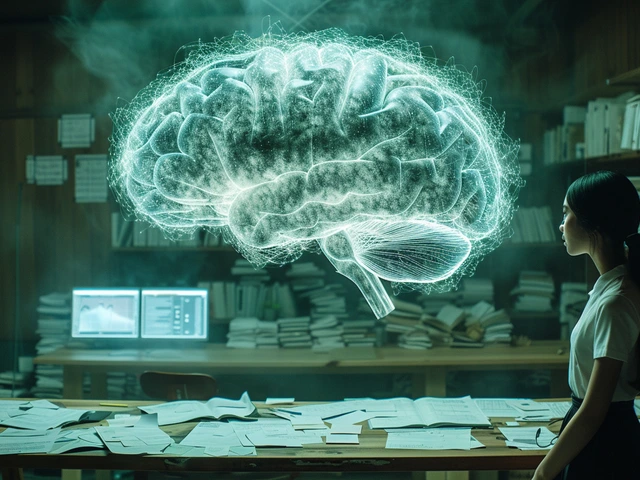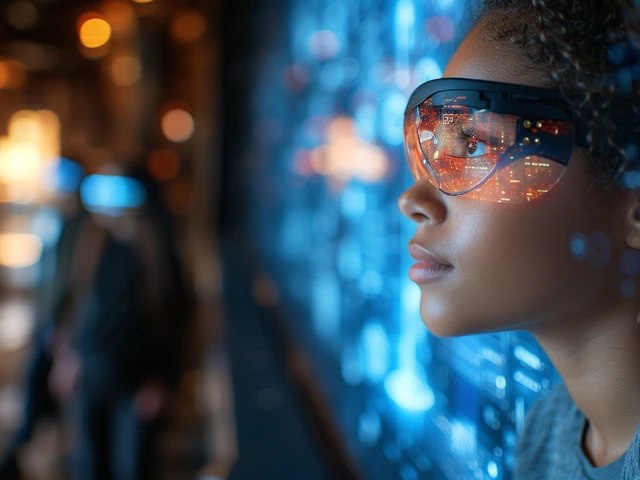Harnessing Python for AI and Machine Learning: The Dawn of a New Technological Epoch

Harnessing Python for AI and Machine Learning: The Dawn of a New Technological Epoch
Understanding Python's Dominance in AI and Machine Learning
When it comes down to discussing the revolution in the technology sector, notably in artificial intelligence and machine learning, the conversation inevitably shifts towards Python. This isn't by mere chance or fashion; Python has earned its stripes. The programming language is cherished for its simple syntax that mirrors human language to a notable degree. This characteristic makes Python extremely approachable for beginners and seasoned professionals alike, allowing for rapid testing and development of complex AI models. My spouse, Magnolia, who dabbles in coding herself, recently mentioned, "The beauty of Python lies in its simplicity; it's almost poetic." This remark resonated with me deeply, underscoring Python's appeal.
Moreover, Python's capabilities are amplified by its vast ecosystem of libraries and frameworks designed specifically for AI and ML. Tools like TensorFlow, PyTorch, and Scikit-learn have become synonymous with AI development, providing extensive resources that span from pre-processing data to training and evaluating models. This rich set of tools accelerates the development process significantly, making Python the go-to for professionals and enthusiasts venturing into the world of AI and ML. Furthermore, the dynamic and supportive Python community plays a pivotal role in its dominance, continuously contributing to the improvement and evolution of these libraries and frameworks.
The Pillars of Python's Ecosystem: Libraries and Frameworks
The foundation of Python's success in revolutionizing AI and ML development lies in its comprehensive suite of libraries and frameworks. TensorFlow, developed by Google, and PyTorch, backed by Facebook, are at the forefront, offering robust platforms for deep learning tasks. These libraries empower developers to build sophisticated neural networks without getting bogged down in the complexities of the underlying algorithms. Another noteworthy mention is Scikit-learn, a library that provides simple and efficient tools for data mining and data analysis. It's particularly favored for its broad collection of algorithms for classification, regression, clustering, and dimensionality reduction.
These libraries not only streamline the development process but also foster innovation by simplifying the implementation of complex models. This democratization of AI and ML development ensures a wider pool of intellect and creativity, pushing the boundaries of what's achievable. Let's not forget about NumPy and pandas, other essential Python packages that handle mathematical operations and data manipulation respectively. They are the unsung heroes in the preprocessing stages of AI and ML workflows, handling tasks that, although less glamorous, are absolutely crucial.
Solving Complex Problems with Python in AI
Python's rise to prominence in the AI and ML space is also accredited to its capacity for solving complex problems with simplified solutions. From natural language processing (NLP) to computer vision, Python has been instrumental in breakthroughs that seemed unfathomable a few decades ago. For instance, NLP tasks that involve understanding, interpreting, and generating human language have seen significant advancements thanks to libraries like NLTK and spaCy. These developments not only enhance machine-human interactions but also open up new avenues for data analysis and insight generation.
In the realm of computer vision, libraries like OpenCV allow for the processing and analysis of large datasets of images, powering innovations in facial recognition, motion tracking, and even autonomous driving. These advancements underscore Python's versatility and its ability to cater to a wide range of AI and ML applications across different sectors, including healthcare, finance, and transportation. The implications are vast, with the potential to revolutionize how we approach problem-solving and decision-making in these critical areas.
Python's Global AI Community and Collaborative Spirit
The growth and evolution of Python in the AI and ML spheres are greatly influenced by its vibrant global community. This community, a melting pot of developers, researchers, and enthusiasts, is the backbone of the continuous improvement and expansion of Python's capabilities. Online forums, GitHub repositories, and social media platforms are bustling with activity, facilitating collaboration, troubleshooting, and the sharing of resources and knowledge. This collaborative spirit is a catalyst for innovation, driving the development of more efficient, accessible, and versatile AI and ML solutions.
Furthermore, the global reach of this community ensures the transfer of knowledge across borders, fostering diversity in thought and approach. This diversity is a key component in tackling complex global challenges through AI and ML, as it brings together a broad spectrum of perspectives and expertise. The community's inclusive and supportive ethos makes it an invaluable resource for both novice and expert developers, encouraging continuous learning and experimentation.
Future Prospects: Python's Role in Shaping the Technological Frontier
Looking ahead, Python's role in the AI and ML fields is set to become even more integral. As technology continues to advance at an unprecedented pace, the demand for innovative AI and ML solutions is expected to rise. Python's adaptability, coupled with its robust ecosystem, positions it perfectly to meet this demand. The ongoing development and refinement of Python's libraries and frameworks are likely to further enhance its capabilities, making even more complex and sophisticated AI models possible.
Moreover, the integration of AI and ML technologies into various aspects of daily life and industry practices is anticipated to accelerate, with Python leading the charge. From improving healthcare diagnostics and treatments to automating mundane tasks, the potential applications are limitless. Python's ease of use, flexibility, and vast resource pool will undoubtedly play a crucial role in enabling the wider adoption and implementation of AI and ML technologies across sectors.
Conclusion: The Python Revolution in AI and ML
In conclusion, Python's ascendancy in the domain of artificial intelligence and machine learning is a testament to its simplicity, power, and versatility. The language has not only democratized access to AI and ML technologies but has also been pivotal in fostering innovation and solving complex problems. Its comprehensive ecosystem of libraries and frameworks, combined with a supportive and collaborative global community, continue to push the boundaries of what's possible in AI and ML. As we look to the future, it's clear that Python will remain at the forefront of this technological revolution, empowering developers and researchers to shape the next generation of advancements in AI and ML.
About
CH Tech Development is a premier resource for the latest updates and insights in the world of technology development. We provide extensive information, articles, and guides on cutting-edge technological advancements. Explore our site to empower your knowledge about the dynamic field of tech development.
Latest Posts


Coding Tips: The Ladder for Every Coding Height
By Silas Hawthorne Jul 26, 2023

Artificial General Intelligence: The AI Dream Come True
By Silas Hawthorne Jul 28, 2023

The Ultimate Programming Tutorial: Your Gateway to Tech Success
By Silas Hawthorne Jul 26, 2023

Write a comment